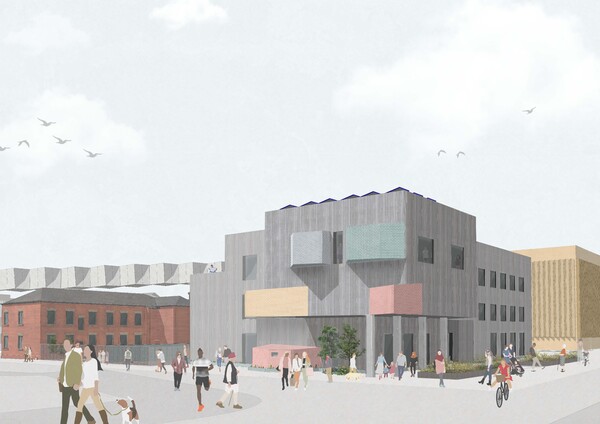My final year project: The Feminist School of Integration, focuses on exploring the journeys of refugees, migrants, and asylum seekers as they hope to start a new and improved life in the UK. The site sits within the city centre, sandwiched between two distinct campuses of the city: the University and the Royal Infirmary Hospital. Respecting the existing architecture of the Pankhurst Centre, the school aims to create spaces to aid and assist refugees, migrants, and asylum seekers with integrating into society by learning valuable life skills, sharing their stories, and educating the locals to help them overcome the struggles of adapting to a foreign environment. The project’s distinct user groups: the students who have come to learn English and the public of Manchester, intertwine throughout their circulation to initiate conversation and integration on a deeper level.
The building adopts integrative design at all stages. The distinct colourful ‘pods’ highlight moments of integration from the streetscape as well as internally. The form of the school was dictated by the journey of the users and purposeful ‘pods of integration’ were created at their crossover. As it gets progressively quieter in programme as you move up, reflective and more intimate spaces have been introduced whilst still maintaining key conversation nooks. The landscaping assists the school and provides a safe and protected break from the internal activity, by creating regions of reflection, accessible gardening, and interaction which are shared with the Pankhurst Centre.
Sustainability has been at the forefront of my design within this project and is an aspect of architecture I am interested in. The meticulous planning from the structural system to the external cladding has been driven by environmental impact to minimise the overall carbon footprint of the building. Implementing active strategies within the school to better user comfort and reduce the building’s external energy demand have been adopted in all internal spaces as required.


